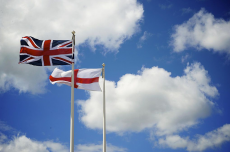
Before the results of the referendum (public vote) on Britain’s membership of the European Union (EU) were announced in the late hours of June 23rd and early hours of June 24th, many political commentators thought that the British public would vote for their country to stay in the EU. The bookies were suggesting that the chances of a vote to leave was very small – around 15%. Nigel Farage, the leader of the United Kingdom Independence Party (UKIP) and one of the key campaigners for a British exit from the EU, even seemed to admit defeat on the evening of the vote.
It was therefore quite a surprise when the results started to come in and after a few hours it became clear that the public had voted to leave the organisation. Many people were left wondering how exactly it was that the nation came to vote to leave when it seemed like the Remain campaign had one. However, now that some time has passed since the referendum, some reasons as to how the vote went the way in which it did are beginning to surface.
First off, the voter turnout for the referendum was 72%. 72% of the people able to vote went to the ballot box to have their voice counted. However, when you cut down voters into age groups, things start to get interesting. Although on average across the age groups voter turnout was 72%, with young voters (those aged between 18 and 24) turnout was only 36%. This was a crucial factor in how the referendum went, because young people tend to be very pro-EU. In fact, three in four young people who turned out to vote voted to remain. Therefore, if young voter turnout had been the same percentage as overall voter turnout, 72%, it is likely that the Remain camp would have had quite a few more votes than it ended up receiving.
Similarly, 25-34 year-olds were another age group which quite strongly voted to remain. It is thought that 62% of those who voted in that age group voted that way. However, though not as low as 18-24 year-olds, voter turnout among 25-34 year-olds was still far below the national average. Only 58% turned out to vote. Therefore, it is also likely that the low turnout by this age group helped contribute to an overall leave vote.
Additionally, it is believed that turnout in London was lower than expected and geographically speaking, London was shown in the referendum to be, as expected, a pro-EU area. In fact it was the only region in the UK, other than Scotland and Northern Ireland, in which most of the electorate voted to remain.
Another important factor in the referendum was that many Labour supporters, particularly in traditional working class Labour areas, who were expected to vote to remain voted to leave.
However, even more important to how Britain ended up voting leave is why so many people voted leave in the first place. It’s clear from polling done by Lord Ashcroft that a significant number of people voted to leave primarily because they believed it would “offer the best chance for the UK to regain control over immigration and its own borders”. However, even more people voted to leave because they believed that “decisions about the UK should be made in the UK”. So it seems that the major impetus for Britain’s vote to leave was national sovereignty – the right of a country to have complete control over its own path.
Image: By THOR (Summer Sky in Southsea England) [CC BY 2.0 (http://creativecommons.org/licenses/by/2.0)], via Wikimedia Commons

0 Comment:
Be the first one to comment on this article.